Bracing for impact: America’s nuclear modernization takes a local toll
This is the third story in a series about Sentinel, the Air Force’s nuclear missile modernization project. Other stories touch on the challenges with creating new plutonium shells and concerns about the Air Force’s budget.
From his house near Great Falls, Mont., farmer Walter Schweitzer can see the frequent military convoys, sometimes large trucks with missiles as cargo, as they rumble toward their destination.
Schweitzer, 62, lives just 25 miles from Malmstrom Air Force Base. He’s spent his whole life around the Minuteman III intercontinental ballistic missiles (ICBMs), 400 of which are deployed across rural Western states, including Montana.
But Schweitzer has concerns about a vast effort from the Air Force to overhaul this land-based leg of the nuclear triad with a brand-new missile called Sentinel.
Schweitzer, the president of the Montana Farmers Union, said the Air Force has “danced around” community questions concerning public safety, housing and road maintenance, as the military prepares to bring thousands of workers to their city.
“We’re experiencing a shortage of affordable housing, and this would be a great opportunity if they had some public involvement and discussion on how they approached it,” he said. “There has been no public meetings discussing location or how this is going to be handled.”
While the U.S. is planning to modernize its entire nuclear triad, which includes bombers and submarines in addition to ICBMs, the Minuteman replacement effort is the most complicated.
The bulk of the Sentinel construction work will take place at three Air Force bases, in the rugged and rural northern U.S.: F.E. Warren outside Cheyenne, Wyo.; Minot, near the North Dakota city of the same name; and Malmstrom in Montana.
This effort will require the cooperation of local communities, who must work with an influx of up to 3,000 workers in the area for several years.
The project, which is being handled by defense contractor Northrop Grumman, will bring jobs and money into communities, so it’s generally being welcomed.
“This is a huge project,” said Minot Mayor Tom Ross. “It’s probably going to be the largest construction project in the history of the state of North Dakota.”
But the expected wave of workers is forcing community adaptation and bringing questions about public safety and housing.

In this image provided by the U.S. Air Force, Airman 1st Class Jackson Ligon, left, and Senior Airman Jonathan Marinaccio, 341st Missile Maintenance Squadron technicians connect a re-entry system to a spacer on an intercontinental ballistic missile during a Simulated Electronic Launch-Minuteman test Sept. 22, 2020, at a launch facility near Malmstrom Air Force Base in Great Falls, Mont. (Senior Airman Daniel Brosam/U.S. Air Force via AP, File)
Sentinel has also raised local environmental concerns involving fuel waste disposal and the easement of private property.
The Air Force did not respond to The Hill’s questions about public safety and housing but said it was engaged in ongoing discussions with local communities.
Public safety, housing concerns
Sentinel will swap out the 400 deployed missiles with new ones, which will host revamped warheads and new plutonium shells.
But the costliest part of the project — and the part that requires the most community cooperation — is the redevelopment of the 450 launch areas, which will entail refurbishing underground silos where the missiles are stored and their launch control centers.
Northrop Grumman will also construct close to 50 new support buildings, 62 communication towers and more than 7,500 miles of utility lines and corridors.
Preliminary work began last year at F.E. Warren, and construction is expected to start within the next few years, according to Air Force Global Strike Command.
The Air Force wants to begin deploying the missiles in 2030, though the military branch is facing an inflating budget that may delay the project by two years or more.
The construction workers are expected to arrive sometime in the late 2020s to early 2030s and will work at each base for two to five years. They will be housed in living facilities known as workforce hubs, commonly referred to as “man camps.”
The Air Force has said it will not place the hubs near schools, residential neighborhoods or other sensitive areas, noting it will work with local communities to comply with zoning laws.
A Northrop Grumman official told The Hill the workers are expected to be handled by a subcontractor on the project — a construction company called Bechtel — and that the work was still years away, considering that part of the Sentinel project has yet to be awarded.
The official, who spoke on background to discuss material not made publicly available yet, said it was “difficult to speculate about things not under the current scope.”
The flow of workers will impact states that house missile silos in the Midwest, including Nebraska.
Nebraska Gov. Jim Pillen (R) said in a town hall meeting last year after he vetoed $10 million in funding for infrastructure related to Sentinel funding that the federal government was responsible for housing them, according to a local outlet.
“When you think about the infrastructure that takes place, we have to work day and night with them to make sure they hold their end of the bill up,” Pillen said, adding that he would not spend money on infrastructure that would be boarded up once the workers leave.
In Montana, work at Malmstrom is primarily going to impact two communities: Great Falls and Lewistown. The Air Force held town halls there in January to discuss Sentinel.
But Rick Tryon, a Great Falls city commissioner, said his concerns were not adequately addressed at the town hall and that the Air Force told him there was no money in the budget for public safety.

In this image provided by the U.S. Air Force, Staff Sgt. Brandon Mendola, left, with the 90th munitions squadron at F.E. Warren Air Force Base in Wyoming demonstrates how they train new missile maintainers to look for scratches on the top of a nuclear warhead. Even a hairline scratch on the polished black surface of the cone could create enough drag when fired to send the weapon off course, so maintainers inspect the devices closely. (Senior Airman Sarah Post/U.S. Air Force via AP)
“We are a little behind in adequately funding our public safety,” Tryon said, adding that his city has around 100 police officers in a community of roughly 60,000 people. “Everybody understands that before this happens, we’ve got to do something to beef up our public safety here, locally.”
“And the way it stands right now, there’s no plan from the Air Force or the federal folks to do that.”
Schweitzer told The Hill it was not clear how and where the workers would be housed, describing 3,000 workers as a “major city.”
“There needs to be a whole lot more discussion and planning,” he said. “Our county seat has half that population or less.”
Minot is in the vicinity of North Dakota’s Sentinel project. But in that city, it’s being largely welcomed with open arms.
Ross, the mayor, said the Air Force has not told his city to build housing. But he said the local government may allocate funds anyway to grow the municipality.
“We see it as an opportunity, and we’re going to build housing,” he said. “There’s a great potential for them to stay in Minot when the project is complete.”
Environmental and property concerns
The Air Force identified in its 2023 Environmental Impact Statement (EIS) that it must dispose of the Minuteman missiles, each of which weighs nearly 80,000 pounds and hosts three solid-propellant rocket motors.
The decommission plan includes the complete disassembly of Minuteman missiles and the burning of solid rocket motor fuel for release at the Utah Test and Training Range in a process that could last up to five years.
The Environmental Protection Agency asked the Air Force to study alternatives in the EIS. The Air Force did not respond to a request for comment on procedures for the disposal of fuel.
Sébastien Philippe, a research scholar with Princeton University’s program on science and global security, said releasing solid rocket fuel through detonation into the outside environment is not a safe and environmentally friendly option.
Philippe, who has released a website tracking concerns about Sentinel, added that the project will have a “massive impact” for the U.S. in environmental terms.

In this image provided by the U.S. Air Force, Airman 1st Class Jonathan Marrs, 21, left, and Senior Airman Jacob Deas, 23, right, work to dislodge the 110-ton cement and steel blast door covering the top of the Bravo-9 nuclear missile silo at Malmstrom Air Force Base, Mont., Aug. 24, 2023. When the first 225-pound aluminum tow, or “mule” could not pull the door open, Marrs dragged down a second tow to give them more power. (John Turner/U.S. Air Force via AP)
“When you unpack [Sentinel], it’s such a huge project,” he said. “Even if everything goes well, there will be some degree of environmental impact.”
In the EIS, the Air Force said the “shipping, handling, disassembly, storage, and disposal of ICBM boosters and interstages have been routinely conducted by Air Force personnel following established protocol for approximately 60 years.”
For local communities, another concern is how private property will be affected by expanding Air Force needs, which has been a focus at town halls.
The Air Force said Sentinel involves negotiations with hundreds of private property landowners and that it has notified landowners whose property might be needed for Sentinel infrastructure.
Air Force officials said town hall meetings are ongoing and pledged to “answer all questions affected landowners may have and seek landowner cooperation regarding existing easements.”
Initial agreements before property acquisition allow the Air Force and U.S. Army Corps of Engineers to conduct real estate surveys on “limited portions” of private property, officials said.
Cooperation with landowners could allow for utility line installations without property acquisition, they added, and the surveys are crucial to determine the boundaries of any easements.
The Air Force has also told residents in Montana that it will need a 2-mile-wide corridor for utility lines, according to Schweitzer. He said local farmers are upset about the corridor because it will impose restrictions for building wind farms. The Air Force did not respond to a detailed question on that concern.
Schweitzer said the corridor is likely to amount to the restriction of 10 million acres around one of the windiest regions of Montana.
“Our national security, as well as our food security, is critically important to this country,” he said. “Our family farms provide food security, and yet we’re struggling economically to make ends meet.”
“We’re losing farmers every day, because they’re going bankrupt,” he added. “Some of my neighbors are making more money off their windmills than they are from their farms. If they were to impose this 2-mile corridor, I own about 30,000 acres, and none of it would be available.”
.jpg?ext=.jpg) Kozloduy currently has two operating reactors (Image: Kozloduy NPP)
Kozloduy currently has two operating reactors (Image: Kozloduy NPP).jpg?ext=.jpg) The Kakrapar site is also home to two operating 202 MWe PWHR, seen here on the right (Image: DAE GODL-India)
The Kakrapar site is also home to two operating 202 MWe PWHR, seen here on the right (Image: DAE GODL-India).jpg?ext=.jpg) The signing of the agreement (Image: Thorizon)
The signing of the agreement (Image: Thorizon)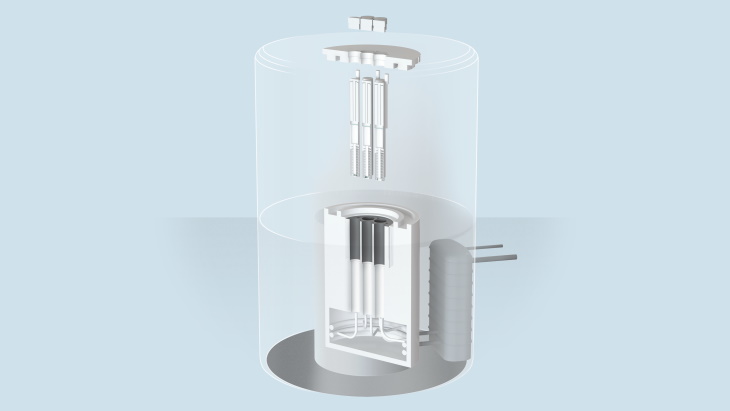 Thorizon's molten salt reactor design (Image: Thorizon)
Thorizon's molten salt reactor design (Image: Thorizon)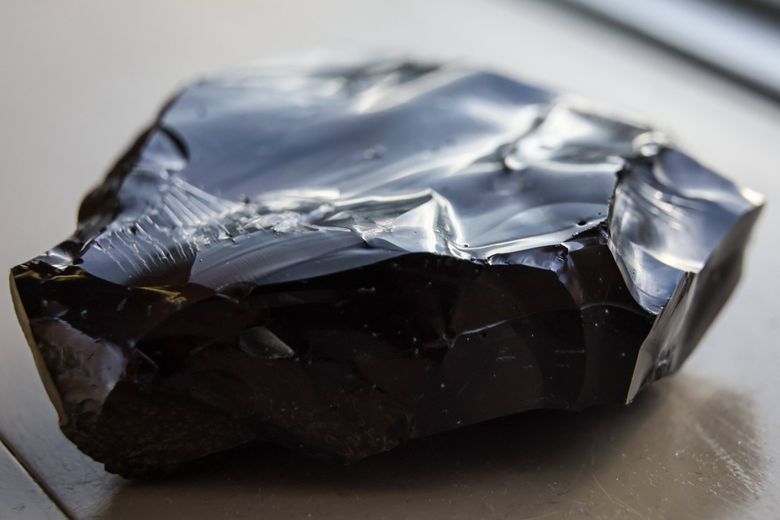


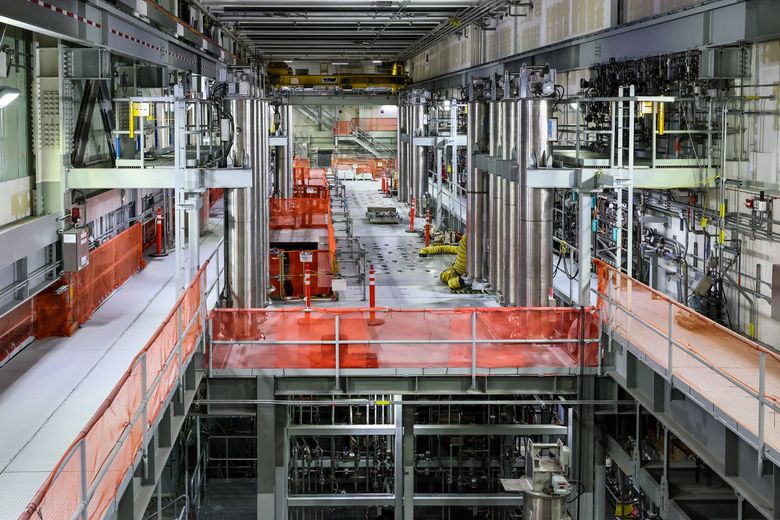
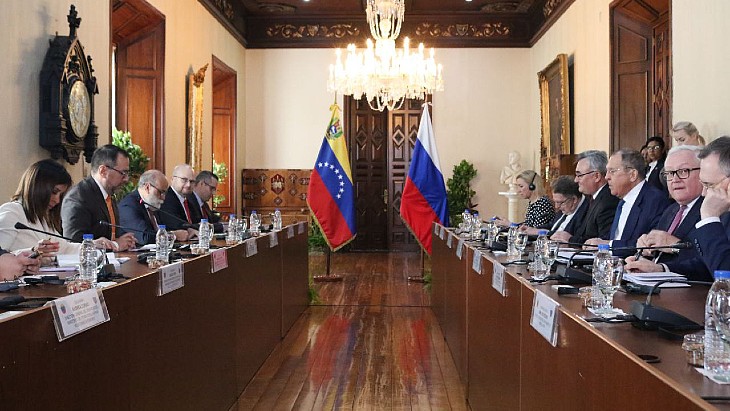 Lavrov, third from right seated, held the talks in Caracas (Image: X/@yvangil)
Lavrov, third from right seated, held the talks in Caracas (Image: X/@yvangil).jpg?ext=.jpg) Michel Heijdra of the Dutch Ministry of Economic Affairs and Climate (left), with Westinghouse's Elias Gedeon (right) (Image: Westinghouse)
Michel Heijdra of the Dutch Ministry of Economic Affairs and Climate (left), with Westinghouse's Elias Gedeon (right) (Image: Westinghouse).jpg?ext=.jpg) Tokohu's Onagawa plant (Image: Kurihalant Co Ltd)
Tokohu's Onagawa plant (Image: Kurihalant Co Ltd).jpg?ext=.jpg) Looking back: the Paducah site was home to a gaseous diffusion enrichment plant that ceased commercial operations in 2013 (Image: Department of Energy)
Looking back: the Paducah site was home to a gaseous diffusion enrichment plant that ceased commercial operations in 2013 (Image: Department of Energy)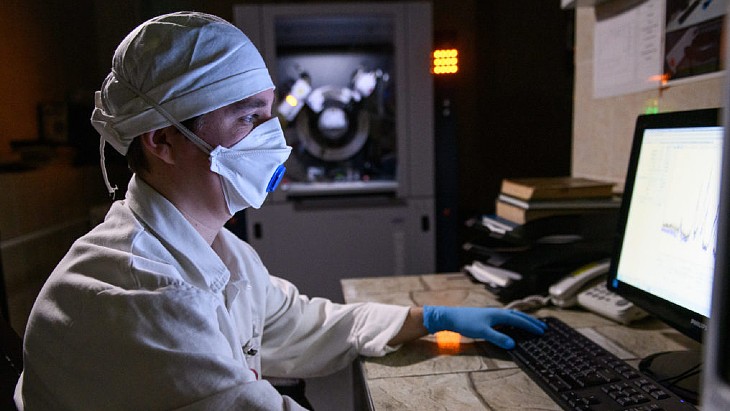 (Image: Rosatom)
(Image: Rosatom).jpg?ext=.jpg) Concrete pouring operations under way at the Isfahan site (Image: AEOI)
Concrete pouring operations under way at the Isfahan site (Image: AEOI).jpg)
.jpg)
.jpg?ext=.jpg) The ground-breaking welded SMR vessel (Image: Sheffield Forgemasters)
The ground-breaking welded SMR vessel (Image: Sheffield Forgemasters)